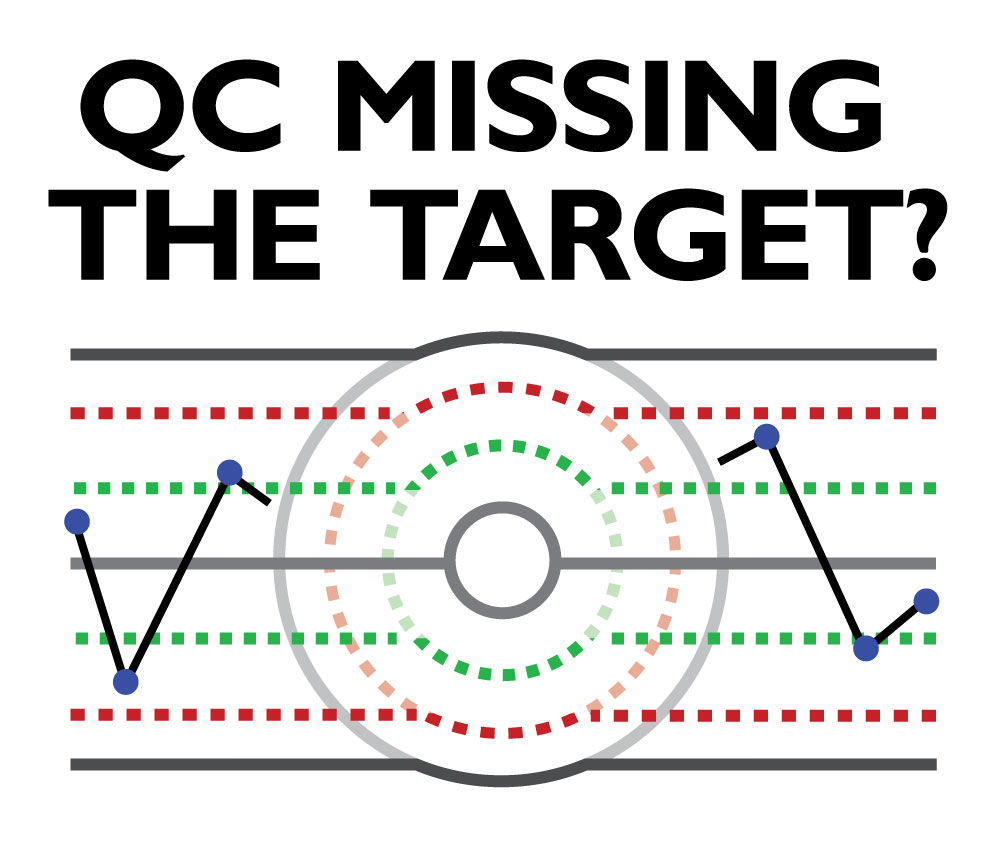A short course on QC charting. Fastest way to understand the "Westgard Rules" and how to use them on Levey-Jennings charts."
The "Westgard Rules" and Levey-Jennings short course is an online training program intended for professionals in Clinical Laboratory Science (CLS).
This course includes lessons, worksheets, and online graphing tools.
Participants must pass a final exam to receive continuing education credits for this course. The internet materials are being provided here on this website and on the main website of Westgard QC.
Purpose
This course is intended to provide education and training in quality control (QC) to a broad audience of healthcare practitioners who perform laboratory tests in central laboratories, clinic or outpatient laboratories, and point-of-care settings.
The Levey-Jennings control chart is the workhorse of the laboratory. For healthcare practitioners who perform laboratory tests, it is essential that they understand these tools in order assure the quality of their tests. Control results must be plotted and interpreted using the Levey-Jennings control charts. Critical decisions about in-control and out-of-control results are made on the basis of these charts. Still, many technologist and analysts are confused about the use and interpretation of results on a Levey-Jennings chart.
Multirule QC - often called the "Westgard Rules" - is a commonly used QC procedure in many laboratories. But many technologist and analysts are confused about its use and interpretation.
This course gives definitive explanations of the Levey-Jennings chart and the "Westgard Rules" (multirule procedure), as well as practical advice on how to use and properly interpret control results on one.
Course Goals
When you complete this course, you will be able to:
- Access internet resources to support continuing education and training in analytical quality management.
- Define the Levey-Jennings chart.
- Construct a Levey-Jennings chart
- Define the different control rules used in multirule QC.
- Interpret control results on a Levey-Jennings chart using multirule QC procedures to determine if patient test results can be reported and, if not, what type of analytical errors are likely occurring in out-of-control runs.
Course materials
- This course description provides a summary of each of the lessons.
- The list at right provides links to all of the lessons/courses (links will appear once you are registered)
- Each lesson plan provides a summary of that lesson, specific objectives, links to the course materials that are to be used, a list of things to do, and some questions for self- assessment.
Levey-Jennings Charts and "Westgard Rules"
|
| 1. How do you plot and interpret control results on a Levey-Jennings chart? |
- Participants will learn to construct Levey-Jennings control charts with appropriate control limits, plot example control data, and interpret the control results.
- In The Levey-Jennings Control Chart,participants will see how to do this for a cholesterol example.
|
| 2. How do you interpret control data using a multirule QC procedure? |
- Participants will be able to interpret control results with a series of rules to determine if patient test results should be reported and, if not, what type of analytical errors are likely occurring in out-of-control runs.
- In "The Westgard Rules," Dr. Westgard defines the rules commonly included in multirule procedures and provides the rationale for using multiple control rules to interpret control rules.
|
| 3. How do you interpret multilevel QC data? |
- Participants will be able to interpret control results when multiple levels of control materials are being analyzed.
- In QC - the Multirule and Multilevel Interpretation, Dr. Westgard illustrates the interpretation of multiple rules with multiple control materials and multiple analytical runs.
|
| 4. What are some common problems encountered while performing QC? |
- Participants will learn to distinguish between good and bad habits for responding to out-of-control signals.
- In "But...Is it really out?" Doing the Wrong QC Wrong, Dr. Westgard and Sten Westgard discuss common "real world" situations with QC, out-of-control events, and errors in QC Design.
- In Ten Ways to do the Wrong QC Wrong, Sten Westgard examines user-submitted out-of-control scenarios and explains where the QC went wrong.
|
Interactive Components
- Several plotting and graphing tools are linked to lesson pages. Participants can use these tools to construct their own Levey-Jennings charts, and then plot data immediately and put into practice what they've just learned.
- You are encouraged to submit questions by e-mail.
- You are encouraged to find a mentor who will be available to discuss the lessons and assessment questions.

